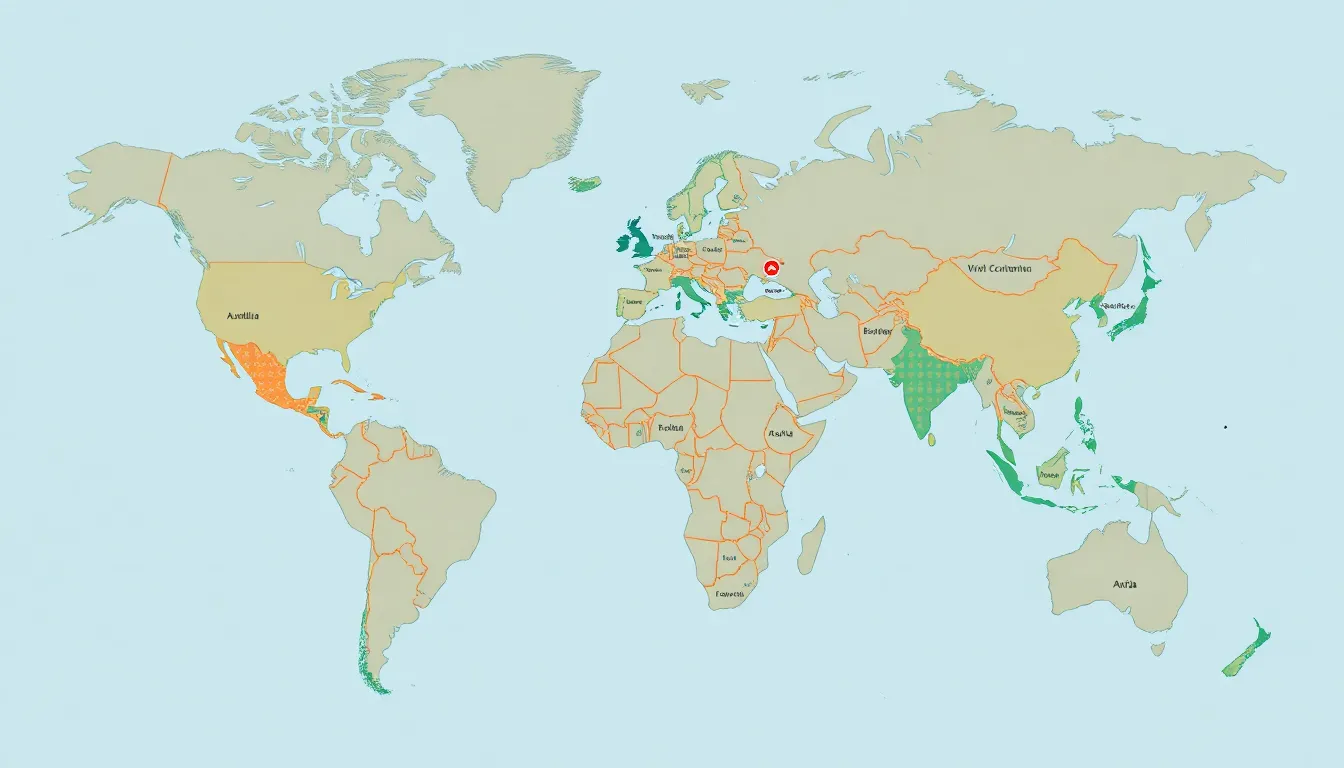In today’s interconnected world, geopolitical risks shape the landscape of global affairs more than ever. From trade wars to territorial disputes, these risks can have far-reaching implications for economies and societies. Understanding the dynamics of geopolitical tensions is crucial for businesses, investors, and policymakers alike.
As nations navigate complex relationships, the potential for conflict or instability looms large. Events that may seem distant can quickly ripple across borders, affecting markets and public sentiment. By staying informed about these risks, stakeholders can better prepare for uncertainties and seize opportunities that arise in a shifting geopolitical environment.
Table of Contents
ToggleOverview of Geopolitical Risks
Geopolitical risks refer to the potential consequences of political decisions or events on global economic stability and security. These risks manifest in various forms, including trade disputes, military conflicts, regime changes, and shifts in alliances. Businesses, investors, and policymakers must recognize these risks to safeguard interests and make informed decisions.
Key elements of geopolitical risks include:
- Economic Sanctions: Governments impose sanctions to modify behavior. These sanctions can restrict trade, investment, and access to financial markets.
- Military Conflicts: Armed confrontations disrupt regional stability, impacting global supply chains and energy prices. Conflicts in areas like the Middle East frequently influence oil markets.
- Territorial Disputes: Disagreements over borders or resources invoke tension between nations. Incidents in the South China Sea illustrate how these disputes affect trade routes and maritime security.
- Regime Changes: Political upheavals create uncertainty. Changes in leadership can result in shifts in foreign policies that impact global relations.
- Alliances and Treaties: Changes in international agreements, such as trade deals or military alliances, can alter the balance of power, prompting economic ripple effects worldwide.
Understanding the dynamics of geopolitical risks equips stakeholders to navigate challenges effectively. Such knowledge allows proactive strategies to mitigate adverse effects while capitalizing on potential opportunities.
Types of Geopolitical Risks

Geopolitical risks manifest in various forms, each influencing global stability and economic conditions. Understanding these types helps stakeholders mitigate potential challenges.
Economic Risks
Economic risks arise from actions such as trade wars, sanctions, and tariffs that disrupt markets. Fluctuations in currency values often occur during political instability, affecting international trade dynamics. For instance, sanctions on specific countries can limit access to resources and markets, resulting in significant losses for businesses reliant on those regions. Companies face uncertainties in supply chains, impacting profitability and investment strategies.
Military Risks
Military risks include conflicts, territorial disputes, and escalating tensions among nations. Regions with ongoing military disputes, like the South China Sea, experience heightened political and economic instability. These risks can deter investment and disrupt global commerce due to trade route uncertainties. Military confrontations can also lead to changes in defense spending, which affects national economies and global supply chains connected to defense industries.
Environmental Risks
Environmental risks connect to geopolitical factors that shape resource availability and disaster responses. Climate change and environmental degradation often lead to resource scarcity, contributing to geopolitical tensions. Conflicts over water resources in regions like the Middle East illustrate how environmental challenges trigger disputes and threaten stability. Countries lacking resources may engage in conflict to secure necessary supplies, impacting global markets and economies.
Factors Influencing Geopolitical Risks
Geopolitical risks arise from various factors that shape international relations and impact global stability. Understanding these factors is crucial for navigating complexities in the current geopolitical landscape.
Political Stability
Political stability directly influences geopolitical risks. Governments with strong institutions and clear policies reduce uncertainty, attracting investment and fostering economic growth. Conversely, instability, such as civil unrest or regime changes, can lead to conflict, thereby disrupting trade and investment. Regions with ongoing political turmoil, like the Middle East or parts of Africa, often experience heightened geopolitical risks. The degree of political freedom, adherence to the rule of law, and effectiveness of governance play significant roles in determining the stability of a nation.
Globalization
Globalization affects geopolitical risks by interlinking economies and societies. Increased trade and investment create dependencies that can mitigate conflicts but also expose vulnerabilities. Economic sanctions imposed by one nation can have far-reaching consequences on others due to these interdependencies. For example, supply chains that span multiple countries are sensitive to political and economic shifts. As nations become more interconnected, geopolitical risks such as trade wars, tariffs, and regulatory changes can disrupt the flow of goods and services, impacting industries worldwide.
Technological Advancements
Technological advancements contribute to shifts in geopolitical risks. The evolution of cybersecurity threats, artificial intelligence, and critical infrastructure vulnerability can destabilize regions. States that lack robust cybersecurity measures are at risk from cyberattacks, which can undermine political systems and economic infrastructures. Furthermore, emerging technologies may heighten tensions between nations as they compete for technological dominance. Nations investing in cutting-edge technologies may gain economic and military advantages, leading to imbalances in power and increased geopolitical conflicts.
Mitigation Strategies
Organizations can employ various strategies to mitigate the impacts of geopolitical risks. Effective mitigation requires proactive risk assessment and robust diplomatic efforts.
Risk Assessment
Risk assessment involves identifying, analyzing, and prioritizing geopolitical threats. Stakeholders collect intelligence on political events, economic trends, and societal changes. Risk matrices help quantify potential impacts, assigning probabilities to various scenarios. Continuous monitoring of geopolitical developments allows businesses and investors to make informed decisions. Strategic foresight enables organizations to adapt supply chains, diversification, and investment strategies accordingly.
Diplomatic Efforts
Diplomatic efforts play a crucial role in reducing tensions and managing geopolitical risks. Entities engage in dialogue with governments and international organizations to foster understanding and collaboration. Participating in multilateral forums promotes shared interests and stabilizes regions. Establishing backchannel communications can help resolve conflicts before they escalate. Building alliances enhances collective security, reducing the likelihood of military confrontations and economic disruptions.
Geopolitical risks are an undeniable reality in today’s interconnected world. Their potential to disrupt economies and societies underscores the necessity for vigilance among businesses, investors, and policymakers. By understanding the various forms of these risks and the factors that influence them, stakeholders can adopt proactive strategies to navigate uncertainties effectively.
Staying informed and engaged in diplomatic efforts can significantly mitigate the adverse effects of geopolitical tensions. As the global landscape continues to evolve, being prepared to adapt and respond will be crucial for maintaining stability and seizing new opportunities in an ever-changing environment.








